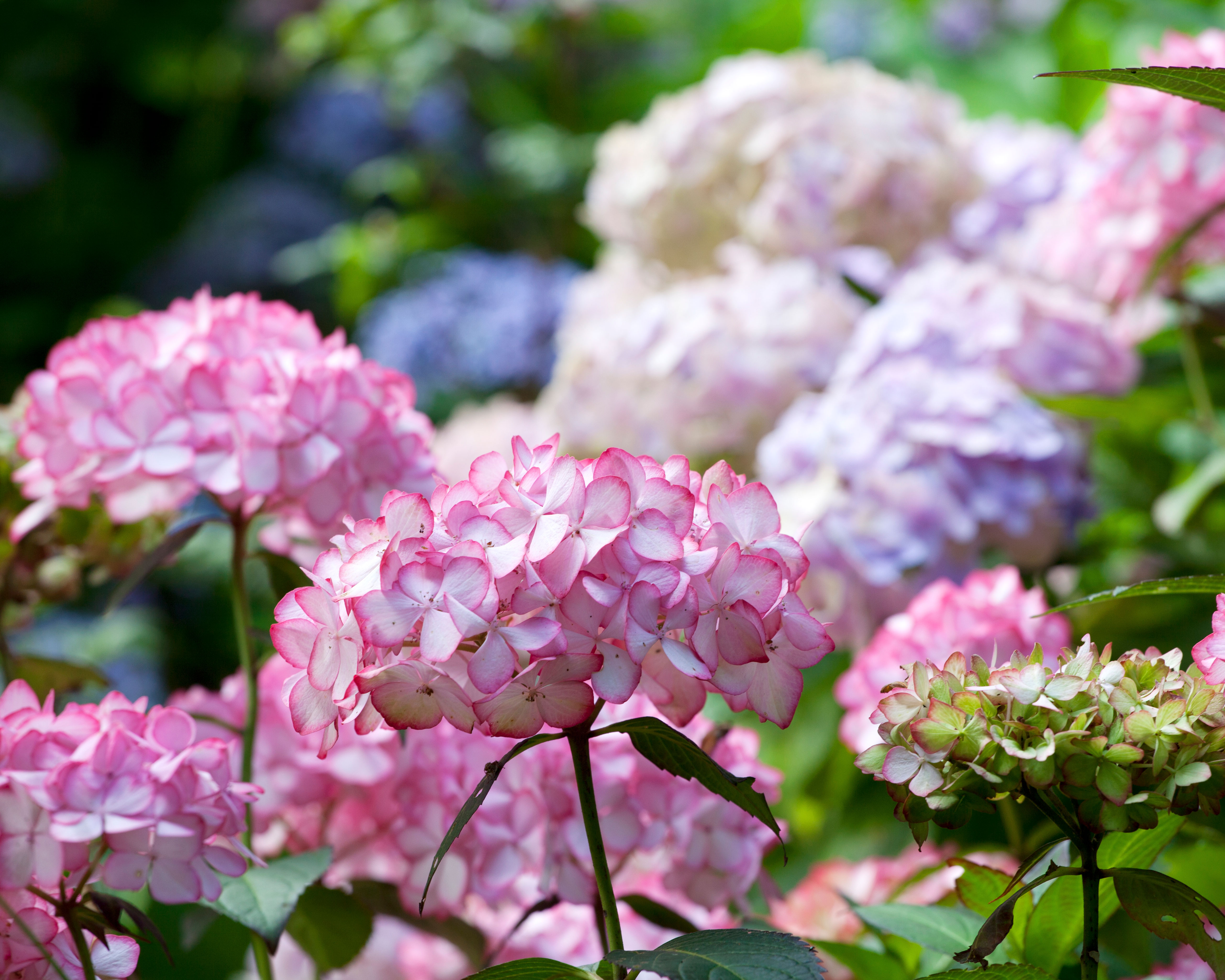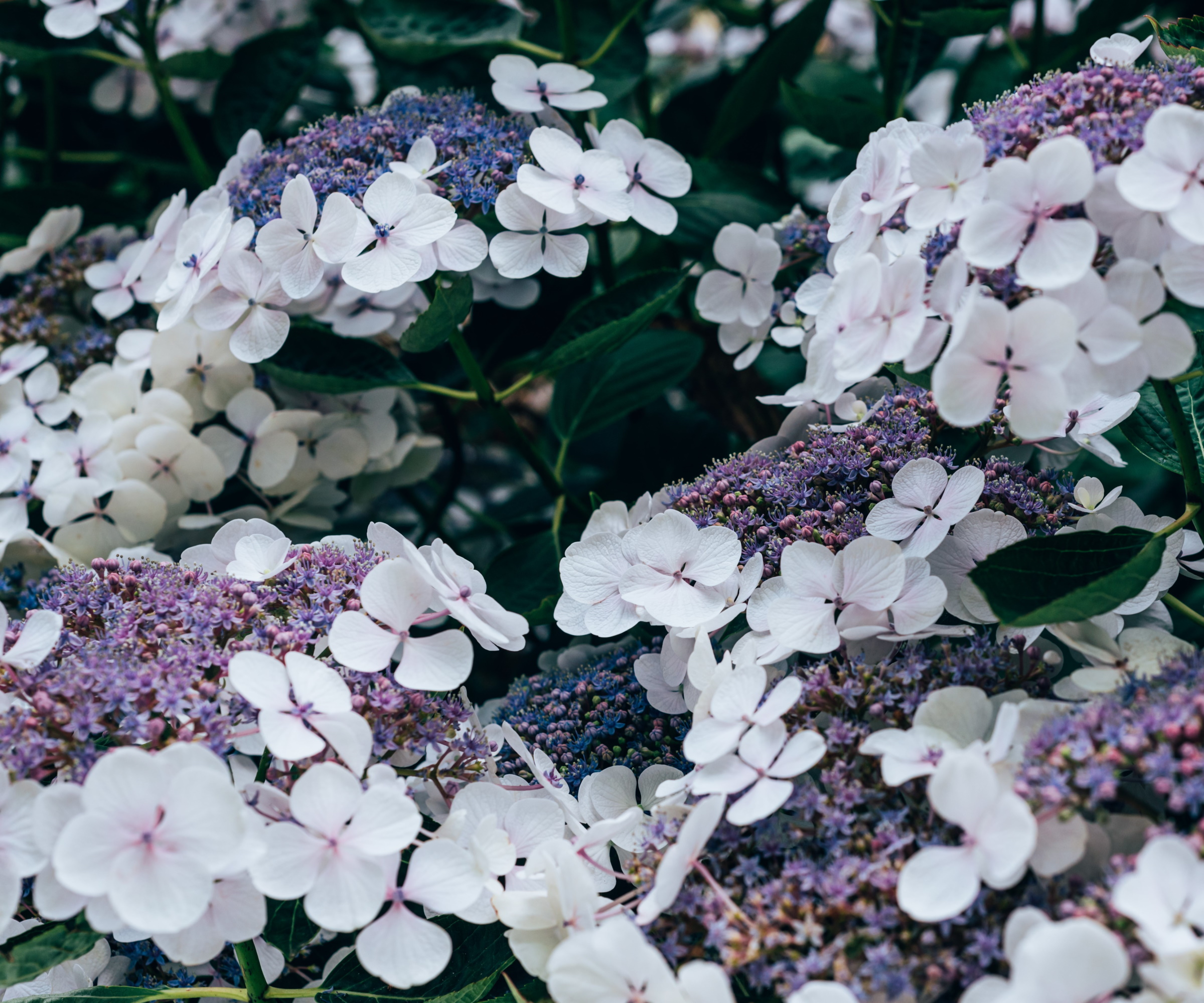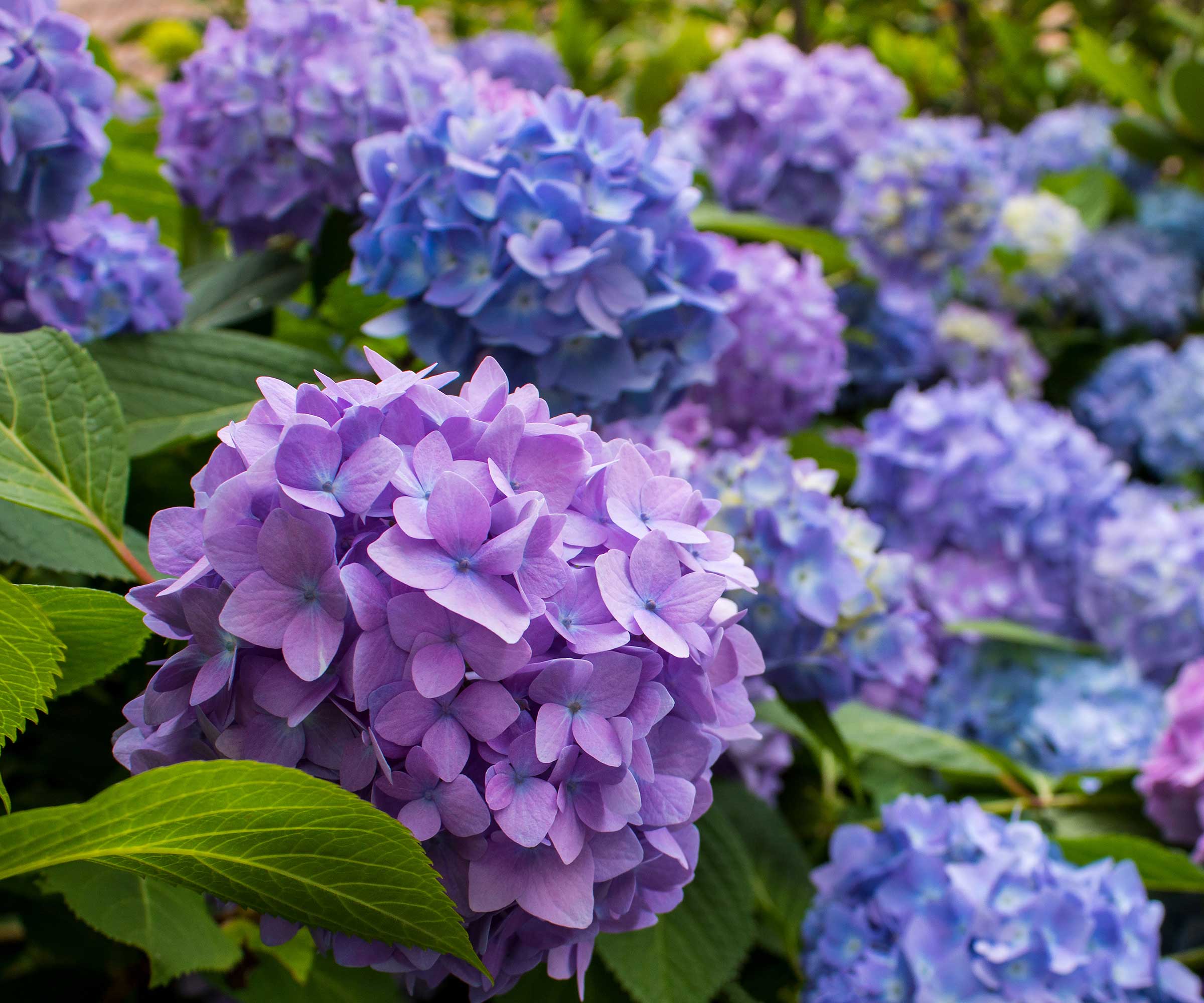When can you transplant hydrangeas? Expert advice on successfully moving these glorious plants to new parts of your yard
Discover the right time to transplant hydrangeas for your climate, and how to avoid potential transplant shock


It’s not difficult to learn how to grow hydrangeas, but when can you transplant them? These resilient plants cope well with most soil types, can be grown in full sun or partial shade, and require little maintenance. However, if you transplant them at the wrong time of year you’ll risk losing these prized plants, which take a number of years to reach maturity.
Hydrangeas are such a firm favourite in our yards for their sheer variety, reliability and blowsy, long-lasting blooms. Whether grown on their own in a border, or as an informal hedge, their voluptuous flower heads provide color and texture in spades.
If you feel your hydrangea isn’t thriving in its current spot, or you would like to move it to a more prominent area of the garden, then transplanting it is an option. We look at the best time to do it depending on where you live, and how to do it safely to avoid your plants going into shock.
When can you transplant hydrangeas?

Much like the best time to plant hydrangeas, transplanting them is best done when they are dormant. In a cooler climate, this is most commonly in late fall. 'Fall is a good time to move a hydrangea because your plant will have enough time to establish its roots in its new position whilst the soil is still warm and it isn't actively growing,' says Rachel Bull, head of gardens on H&G.
In warmer areas you can transplant them over winter, between December and February, as long as the ground isn’t frozen. To ensure it is dormant, wait until the flowers have died and the leaves have fallen before moving your plant.
Hydrangeas can also be successfully transplanted in spring, before the first flush of growth.
Your USDA hardiness zone will influence the best time to transplant hydrangeas during the spring. ‘For warmer zones 7-9, it’s best to move them in early spring, during March to April, but in cooler zones 4-6 the ideal time would be by mid-May,’ says Rachel. 'If you can see that your hydrangea has already started actively growing again, it is best to leave it in the ground until fall.'

Rachel is a gardening editor, flower grower and floral designer. Her journalism career began on Country Living magazine, sparking a love of container gardening and wild planting. After more than a decade writing for and editing a range of consumer, business and special interest titles, Rachel became editor of floral art magazine The Flower Arranger. She then trained and worked as a floral designer and stylist in London for six years, before joining the Homes & Gardens team.
How to move and replant hydrangeas?

As long as you move your hydrangeas at the right time of year, you should find they cope well with being transplanted. However, moving any plant always presents a risk of over-stressing the plant and losing it, so make sure that the new spot is suitable and offers the right conditions for your plant.
Hydrangeas like reliable moisture in the summer, so don’t plant them in a dry position.
Avoid a south-facing spot, and ensure there is some protection from frosts and shade from the blazing afternoon sun. Some species of hydrangea, such as 'Annabelle', tolerate full sun, but if yours is more sensitive, it will become stressed by drought in the summer.
Once you have chosen a good new spot, it’s important to get the ground ready before digging up the plant. In light soil, add in some organic matter before planting to help with moisture. Remove any large stones from the hole, and consider adding a sprinkling of mycorrhizal fungi, available from Amazon, to help the roots to establish.
If the plant is large, you may need to gently tie around its branches to make it more manageable to handle.
'Carefully use your transplant spade to gently dig around the edges of your plant at the drip line without actually digging it up. Then go deeper and start to coax the plant out of the ground. You are trying to keep as much of the rootball intact as possible,' says Lorraine Ballato, hydrangea expert and author of the book ‘Success with Hydrangeas’.
Relocate to its new spot, using a wheelbarrow or a helper if the plant is large. Place in the hole – avoiding planting the hydrangea deeper than its previous location.
Lorraine Ballato then suggests 'puddling in' your new plant: 'Put your plant into a very wet hole that has just finished draining. The hole might even have some water still in the bottom of it - with some of the backfill soil. Then water the plant and the backfill slightly to get a good muddy mix going. Tamp it slightly to remove the air pockets. Let that set for a bit, and then repeat that process until the plant is completely in the ground. It’s OK if there is a bit of water sitting at its crown that will slowly percolate down to the roots. This process not only waters the plant well, but also eliminates air pockets during and after backfilling.'
You can add mulch, such as this natural pine mulch from Amazon, to give your hydrangea extra nutrients, keep in moisture and help suppress weeds.
If you are moving the hydrangea during cooler, wetter weather, then you won't need to water often. However, in warmer weather, do not let the soil dry out, and water regularly until established.

Lorraine Ballato is a hydrangea expert and the author of the international best-selling book 'Success with Hydrangeas', available at Amazon. She is also an in-demand speaker throughout the US and the resident hydrangea expert at the New York Botanical Garden.
How to avoid hydrangea transplant shock

Transplant shock is a common side effect of moving plants. The telltale signs are wilting and falling leaves, and hydrangeas not blooming. In severe cases, your plant may not recover.
'You can minimize the risk of hydrangea transplant shock by digging up as much of the root ball and surrounding soil as possible. Too much damage to the roots can prove fatal,’ says Rachel Bull.
Although knowing how to prune hydrangeas is vital, avoid pruning it at this stage as it could place too much stress on the plant.
Crucially, make sure you keep your hydrangea well watered until it settles into its new spot. Once it starts to flower, you can be confident that the hydrangea has transplanted well.
FAQs
Can you transplant hydrangeas in July?
July is not the best time of year to transplant hydrangeas, and you risk losing the plant if you try to do it. If you must move your hydrangea in July, try to make sure it’s not during a particularly hot and dry spell of weather, and keep your plant as hydrated as possible.
As the weather gets colder, discover how to winterize hydrangeas to protect them from the elements and ensure they come back healthy the following year. And always think about what to plant with hydrangeas to get the best results from your displays – there are many beautiful flower varieties that make striking companion plants.
Sign up to the Homes & Gardens newsletter
Design expertise in your inbox – from inspiring decorating ideas and beautiful celebrity homes to practical gardening advice and shopping round-ups.

Melanie has worked in homes and gardens media for two decades. Having previously served as Editor on Period Living magazine, and worked on Homes & Gardens, Gardening Etc, Real Homes, and Homebuilding & Renovating, she is now focusing on her passion for gardening as a Senior Editor at Gardening Know How. As a keen home grower, Melanie has experimented with pretty much every type of vegetable at some point – with mixed results. Often it is the simplest things that elude you, which may explain why she just can't seem to master zucchinis.
-
 This is the single best upright vacuum we've ever tested – and it's on offer with $130 off at Shark for a limited time only
This is the single best upright vacuum we've ever tested – and it's on offer with $130 off at Shark for a limited time onlyYou won't want to miss this one
By Dan Fauzi
-
 Nate Berkus says slipcovered sofas are back on trend – and I just found a way to create this designer-approved laid-back look from just $86
Nate Berkus says slipcovered sofas are back on trend – and I just found a way to create this designer-approved laid-back look from just $86This classic style is making a strong comeback, but did you know you don't have to buy a whole new couch to get this Nate-approved look?
By Eleanor Richardson